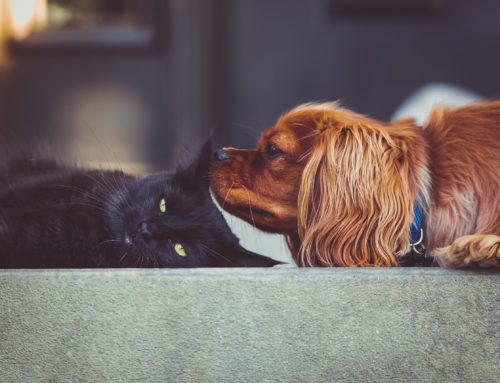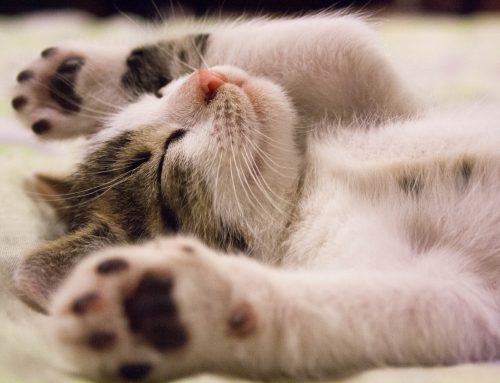Question:
I’ve been thinking about putting my kitties on a raw diet. I’m on a budget, but want to make sure my cats eat as healthily as I do. Do you have any information or opinion on this, or any recipes?
-Sarah A.
Hi Sarah A.,
This topic is very interesting and controversial amongst many people. Do I hear a cat fight coming on? MEEEEEEOW!!! A lot of people think that feeding a raw diet to pets is the best way to mimic the way us cats and dogs eat in the wild. If I lived outside, I would eat birds, mice and rabbits, so I should eat those as an indoor pet too, right? Well not necessarily, because many others feel that there are serious dangers associated with feeding a diet containing raw meats.
I will do my best to cover the pros and cons of feeding your pets a raw diet. Please remember, that there has not been a great deal of research performed on this type of diet, so many points given here are based on limited findings and personal experiences.
Proponents of the raw food diet assert that cats and dogs are obligate carnivores and their systems have evolved over thousands of years of eating a raw food diet in the wild. Therefore, they believe that a predominately raw meat diet supplemented with some grains, vegetables and fruits, taurine, certain enzymes, and essential fatty acids will closely mimic the food your pet would get in the wild, which they say will provide the best possible health for your animal.
Potential benefits of the raw food diet:
• Shinier coats and healthier skin – Uncooked food naturally has more nutrients than food that has been cooked. More nutrients can cause shinier and healthier skin and coat.
• Higher energy levels – Many proponents report that previously lethargic and sluggish pets become vibrant and energetic once the raw diet feeding begins.
• Fewer health problems –Many commercially processed foods contain grains, oils, and preservatives that have been linked to allergies, over-eating, diabetes, weight gain, and numerous other problems.
• Healthier weight – Raw food is less calorie-dense than processed dry foods. Also, chewing bones slows down the eating process considerably, making it far harder for a pet to overeat.
Cons:
Potential risks include:
• Threats to human and pet health from bacteria in raw meat – there are concerns about whether pets can become sick due to exposure to the bacteria in raw meat. Additionally, humans that come in contact with raw meat should be vigilant about cleaning up to avoid human infection. There is also some evidence to show that animals that are fed a raw diet shed more bacteria in their coats and feces. So those that are sick, pregnant, or elderly may want to take extra precaution when it comes to deciding to feed this diet.
• An unbalanced diet that may damage the health of pets if given for an extended period – Since there are widely differing opinions about the EXACT proportions of ingredients that should be included in a raw diet, there is the risk of nutritional deficiencies or excesses that could occur from incorrect feeding that could cause serious health problems when given long term.
• Potential for whole bones to choke an animal, break teeth or cause an internal puncture – Many claim that giving bones to pets is a very dangerous practice and should be avoided.
• No scientific proof of benefits – As stated before, the evidence is limited about the benefits of feeding the raw diet. This could be because not much research has been done in the area, or it could be because the benefits may not be as definite as many think they are.
Keep in mind that the raw food diet is not appropriate for all pets. Because the diets are typically high in protein and certain bacteria, they may not be appropriate for pets with late-stage kidney failure, severe liver failure, pancreatitis, digestive issues, cancer, or pets undergoing chemotherapy. Always check with your vet before beginning any new diet.
What are the alternatives?
There has been a large movement in the pet food industry lately to move towards high protein, grain-free, holistic versions of dry and canned pet food. Often, but not always, these foods are of much higher quality than traditional commercial pet foods. But be careful to do your research and not buy just any food claiming to be “natural” or “holistic,” because many of these terms are used loosely in the pet food world.
There are also commercially-prepared frozen raw diets that can be a great alternative for those who want to try the raw food diet, but don’t have the time to prepare the meals themselves. There are also claims that freezing the raw meat kills some of the dangerous bacteria.
You can find many of these great food options at your local holistic pet food store. A great place to find a lot of these foods in the Raleigh area is a store called Paws in the City. My mom LOVES this place, and shops there almost exclusively for our food.
So Where do I Stand?
Well, I’m just a cat, so I don’t get to make the decisions about diet around here… But my mom does, so she told me what she thinks. While she thinks that a lot of commercial foods are of very poor quality and nutritional value (like products with animal by-products or corn as the first ingredient.), she is also not a strict raw food proponent. She believes that generally, a pet owner should strive to provide the BEST possible food that they can afford. For her, that means feeding us only high quality grain-free foods. Our diet varies between some raw meats, fruits, and vegetables, grain-free canned foods, and grain-free dry foods. Om Nom Nom!
As always, though, your pet’s diet is a very personal decision. Research the options, speak to your veterinarian, and make a well-educated decision about your pet’s nutrition. We cat’s may get 9 lives, but we need to make the best of them!








